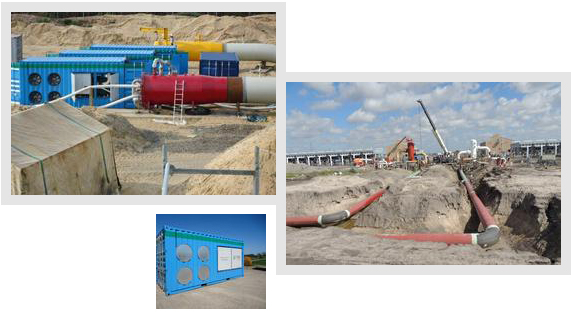High Volume Air Drying Equipment
Pipeline Drying International is changing the way pipeline drying and station drying is performed with our newly patented, high-volume air-drying equipment. We offer the smallest footprint and greatest volume of dry air per gallon of fuel of anything on the market.
PDI's new Mobil Drying Unit (MDU 8000) is a self-contained 20-foot container that can produce the equivalent super dry, oil-free air as (4) four 1600 CFM air compressors with desiccant dryers while consuming less than 400 gallons of fuel per 24 hours.

Why is Pipeline Drying Necessary?
Unfortunately, residual water left after hydrostatic testing is not always acceptable in many natural gas applications and other systems.
Pressure testing of pipelines, stations, tanks or pressure vessels of any type is critical to proving the integrity of that system. Hydrostatic testing is typically performed after new construction but is also performed to fulfill mandatory integrity requirements.
In systems where water is unacceptable, drying can become a critical service. The most common methods for pipeline drying, station drying, and tank drying are air drying, nitrogen drying, and vacuum drying.
Pipeline Drying International can perform drying with all of these methods. However, we feel that high volume air drying has historically proven to be both fast and cost-effective.
In natural gas pipelines, small amounts of water left in the pipeline can cause corrosion issues and create problems such as hydrate formation and icing issues that can start to reduce flow rates. Water can also create product quality issues or system upsets.
